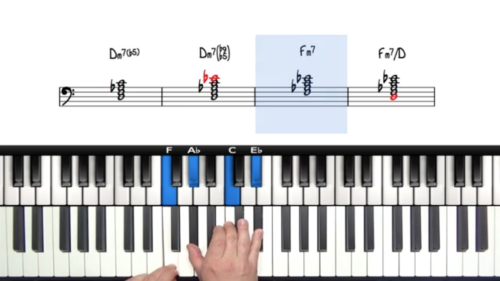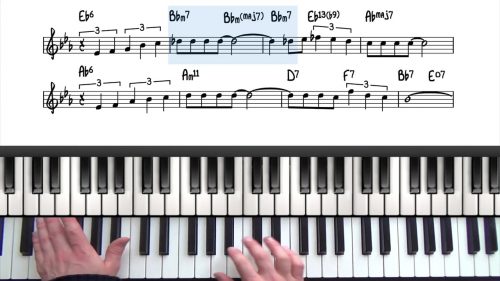UST Drills: 13#11 & 13b9
Welcome to slot 4 in this practice series on altered chord voicings.
In the previous 3 slots we have been exploring mostly single alterations and how they sound in the context of major and minor 251 progressions.
We’re now going to explore some useful drills for upper structure triads.
The 4 Common Upper Structures
Now there are 4 common upper structure triads as illustrated in the upper structure triad cheat sheet. We will split these 4 USTs into pairs for the purpose of these drills.
Similarities between 13#11 and 13b9
The first pair is UST 2 and UST 6. We are going to group UST 2 with UST 6 because they both contain a natural 13.
UST 2 is a major triad built off the 9. So for example over C7, that the 9 would be D, and so a D major triad would give us the 9, #11, and 13 over the dominant shell in our left hand.
UST 6 is a major triad built off the 6 or 13, so again using a C7 chord as an example, the 6 or 13 would be A, so an A major triad would give us 13, b9, and 3 over the dominant shell in our left hand.
We demonstrate these USTs in context of the tune Misty to see how they are closely related and somewhat interchangeable based on personal taste.
Drilling The USTs Around All 12 Keys
First of all we play 251s in all 12 keys with UST 2 over the V7 chord in each progression. We then repeat the same exercise with UST 6 over the V7 chord in each progression.
Lesson Downloads
-
Upper Structure Triad Cheat Sheet File Type: pdf
-
Altered Harmony Practice Planner File Type: pdf
Practice Tips
-
Also experiment with inverting and arpeggiating the triad shapes in your right hand.
-
The top and bottom note can be doubled to create bigger voicing shapes and sounds.
-
Always remember to apply these UST voicings in context of tunes to help you internalise the formulas and when they can be applied.
-
Use the upper structure cheat sheet to uncover voicing possibilities when playing through your favourite tunes.






